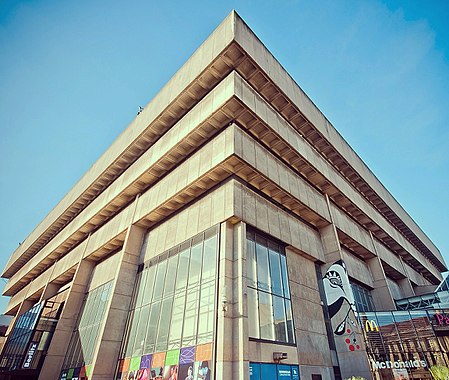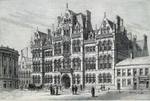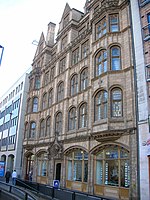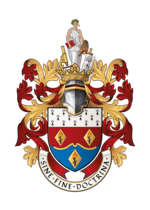Birmingham Central Library

Birmingham Central Library was the main public library in Birmingham, England, from 1974 until 2013, replacing a library opened in 1865 and rebuilt in 1882. For a time the largest non-national library in Europe, it closed on 29 June 2013 and was replaced by the Library of Birmingham. The building was demolished in 2016, after 41 years, as part of the redevelopment of Paradise Circus by Argent Group. Designed by architect John Madin in the brutalist style, the library was part of an ambitious development project by Birmingham City Council to create a civic centre on its new Inner Ring Road system; however, for economic reasons significant parts of the master plan were not completed, and quality was reduced on materials as an economic measure. Two previous libraries occupied the adjacent site before Madin's library opened in 1974. The previous library, designed by John Henry Chamberlain, opened in 1883 and featured a tall clerestoried reading room. It was demolished in 1974 after the new library had opened. Despite the original vision not being fully implemented, the library gained architectural praise as an icon of British brutalism with its stark use of concrete, bold geometry, inverted ziggurat sculptural form and monumental scale. Its style was seen at the time as a symbol of social progressivism. Based on this, English Heritage applied but failed twice for the building to gain listed status. However, due to strong opposition from Birmingham City Council the building gained immunity from listing until 2016.In 2010–11, Central Library was the second-most visited library in the country, with 1,197,350 visitors.
Excerpt from the Wikipedia article Birmingham Central Library (License: CC BY-SA 3.0, Authors, Images).Birmingham Central Library
Chamberlain Square, Birmingham Ladywood
Geographical coordinates (GPS) Address Website Nearby Places Show on map
Geographical coordinates (GPS)
| Latitude | Longitude |
|---|---|
| N 52.480297222222 ° | E -1.9047694444444 ° |
Address
Chamberlain Square
B3 3AX Birmingham, Ladywood
England, United Kingdom
Open on Google Maps








